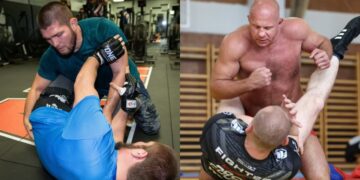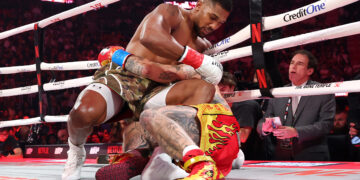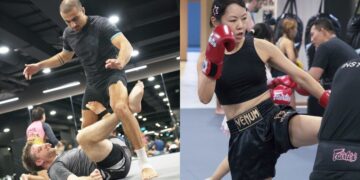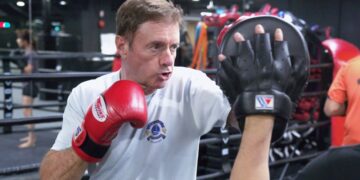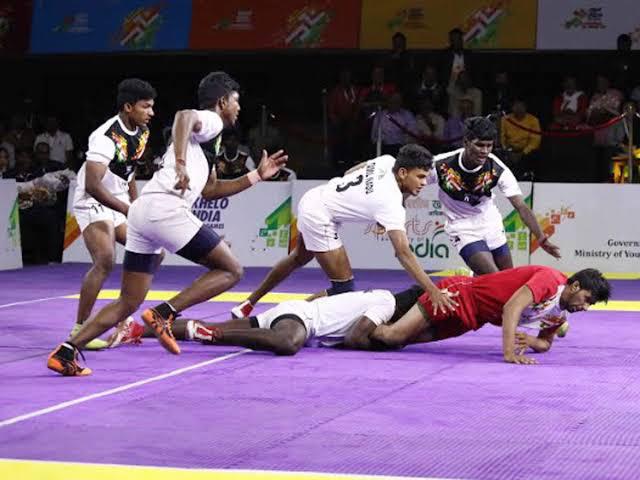Muay Thai is often called the art of eight limbs because of its use of punches, kicks, elbows, and knees. But one of the most defining features of the sport is the clinch. For many fighters, the clinch is where battles are won and lost. It is a position that demands strength, timing, and technique. In places like Singapore, where martial arts continue to grow in popularity, the clinch has become a central part of training for both beginners and advanced students. Understanding the techniques that make the clinch effective is key for anyone looking to sharpen their Muay Thai skills.
Understanding The Muay Thai Clinch
The clinch in Muay Thai is not the same as in boxing or MMA. In Muay Thai, it is both an offensive and defensive weapon. Fighters use the clinch to control their opponent’s posture, limit movement, and set up strikes. It is a test of endurance and skill, as staying balanced and dominant requires constant adjustments. The clinch is also deeply rooted in Thai tradition, with generations of fighters perfecting the art. That being said, let’s explore five effective techniques that often dictate the outcome in the Muay Thai clinch.
1) Double Collar Tie (Plum Clinch)
One of the most recognizable techniques in the clinch is the double collar tie, also called the plum. This position involves securing both hands behind the opponent’s head and pulling it downward while maintaining pressure with the forearms. Done correctly, it makes it very difficult for an opponent to escape. From this position, fighters can deliver a relentless barrage of knee strikes to the body or head. The plum clinch is iconic in Muay Thai, and mastering it gives fighters a powerful tool inside the ring.
2) Inside Control And Hand Fighting
Another key element of clinch fighting is gaining inside control. Instead of always going for the double collar tie, fighters often work to control the opponent’s arms through hand fighting. By slipping their hands inside and controlling the wrists or biceps, they can neutralize the opponent’s strikes and set up their own attacks. This constant battle for inside control may look subtle, but it often decides who dominates the clinch exchange.
3) Knee Strikes
Knees are the heart of the Muay Thai clinch. Once a fighter has secured a strong position, knees become the main weapon. Straight knees to the body can sap an opponent’s energy, while diagonal knees can slip through small openings. Spear knees, driven upward with precision, are especially punishing. What makes knees so effective is their ability to score heavily in competitions while wearing down an opponent both physically and mentally.
4) Sweeps And Off-Balancing
Beyond strikes, the clinch is also about controlling balance. Sweeps and trips are used to throw opponents off their feet, breaking their rhythm and showing dominance. By shifting weight at the right moment or using the legs to hook and trip, fighters can send opponents to the canvas. While sweeps may not cause direct damage, they score points in competition and send a clear message of control.
5) Elbows
Although the clinch is most famous for its knees, elbows are also a dangerous weapon when space opens up. Short, sharp elbows can cut and disrupt an opponent’s focus. The timing for elbows in the clinch is critical, as throwing them recklessly can leave openings. Still, when used with precision, elbows can change the momentum of a fight instantly, even resulting in a knockout in some cases.
Training The Clinch Effectively
Training the clinch requires more than just learning the moves. It takes conditioning, repetition, and the ability to stay calm under pressure. In most Muay Thai gyms, fighters spend entire sessions practicing clinch control, hand fighting, and knee strikes. Neck and core strength are heavily emphasized, since they are essential for resisting an opponent’s pulls and maintaining balance. Clinch sparring is also a key part of training, as it allows fighters to develop timing and flow in real exchanges.
The Clinch In Modern Muay Thai Competitions
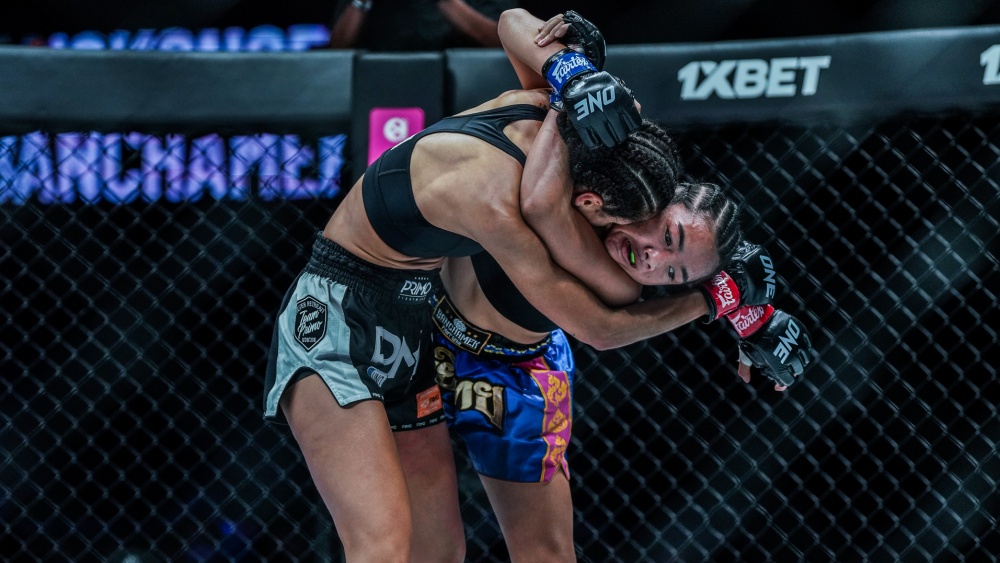
Clinch mastery has defined Muay Thai legends and still dominates today, with knees, sweeps, and control shaping victories from Thailand’s icons to ONE Championship’s global stage.
In competition, the clinch remains one of the most important areas of the sport. Judges often reward fighters who show clear dominance in the clinch with knees, sweeps, and control. Many of the greatest champions in Muay Thai history, from Samart Payakaroon to Petchboonchu FA Group, and even Sagetdao Petpayathai, built their legacies through mastery of the clinch. Today, fighters in promotions like ONE Championship continue to showcase how devastating clinch work can be, keeping the tradition alive on a global stage.
Final Thoughts
The Muay Thai clinch is more than just a way to tie up an opponent. It is a complete system that blends control, strikes, sweeps, and endurance. Every exchange inside the clinch reveals who has the sharper technique, stronger will, and better preparation. For anyone serious about Muay Thai, learning the clinch is not optional; it is essential. The techniques may look simple from the outside, but once experienced firsthand, the depth and power of the clinch become clear.
You may also like:
Kickboxing Vs. Muay Thai: Understanding The Differences (And Surprising Similarities)
Some comebacks roar. And there are comebacks whispered, tempered with emotion, healing, and the weight of time. Stamp Fairtex, the Muay Thai Queen, falls into the latter. She’s not just fighting again, she’s reclaiming a…
At first glance, kickboxing and Muay Thai might look like twins in the striking family, with fast punches, powerful kicks, and fighters in gloves exchanging blows. But once you dig a little deeper, you’ll notice…
When most people in Singapore think of Muay Thai, they picture fast-paced strikes, clinches, and heavy kicks taught in modern martial arts gyms or featured in global events like ONE Championship. But behind the explosive…
Walk into any martial arts gym in Singapore or across the world today and you are bound to hear students and coaches talking about strength and conditioning, discipline, and the growing popularity of Muay Thai….
In Muay Thai, the elbow is often seen as the ultimate equalizer. It cuts, stuns and ends fights suddenly. Known as one of the “8 limbs” in Thailand’s national sport, the elbow has always been…
Muay Thai has always been known as the art of eight limb. Sharp elbows, crushing knees, slicing kicks, and crisp punches delivered with speed and rhythm. But behind the beauty and fluidity of it all,…
The recent bullying incident at Sengkang Green Primary School in Singapore, where a Primary 3 student was persistently targeted for nearly six months and her mother later received chilling death threats, has cast a spotlight…
Fitness in Singapore has always been shaped by the demands of a busy lifestyle. For many, working late hours or managing family commitments means that mornings and afternoons are rarely free for exercise. Over the…
Boxing fans around the world are buzzing about the long-awaited mega showdown between Terence Crawford and Canelo Álvarez. In the landscape of the pugilists and combat sports, few matchups carry the kind of intrigue this…
Walk into any BJJ academy and you’ll probably see a mix of fresh-faced twenty-somethings drilling berimbolos, competitive purple belts sweating through shark tank rounds, and somewhere in the corner, a guy in his 50s with…
For decades, running has been considered an essential part of a martial arts fighter’s training. From boxers pounding the pavement at dawn to Muay Thai athletes logging endless roadwork sessions in Thailand, running has long…
Many working adults chase success in their careers but often do so at the expense of their health and peace of mind. Stress, long hours, and unhealthy coping habits like late-night drinks, endless scrolling, or…








